Batteries aren't something you think about much, until you realize they're dead. Flashlights, RVs, and toys usually have some type of battery. There are two types of batteries, disposable and rechargeable. You might be curious about how long a deep cycle battery can last without a charge. We discovered some fascinating answers from our research.
Deep cycle batteries can last for a long time without charging when not in use. It's also possible to recharge a dead deep cycle battery fully. Experts claim that depending on the size, type, and usage of the battery, it can last up to 30 days without being charged.
You might own a deep cycle battery, but you don't understand it well. Continue reading to learn how the size, type, and deep cycle battery usage affects the charge.
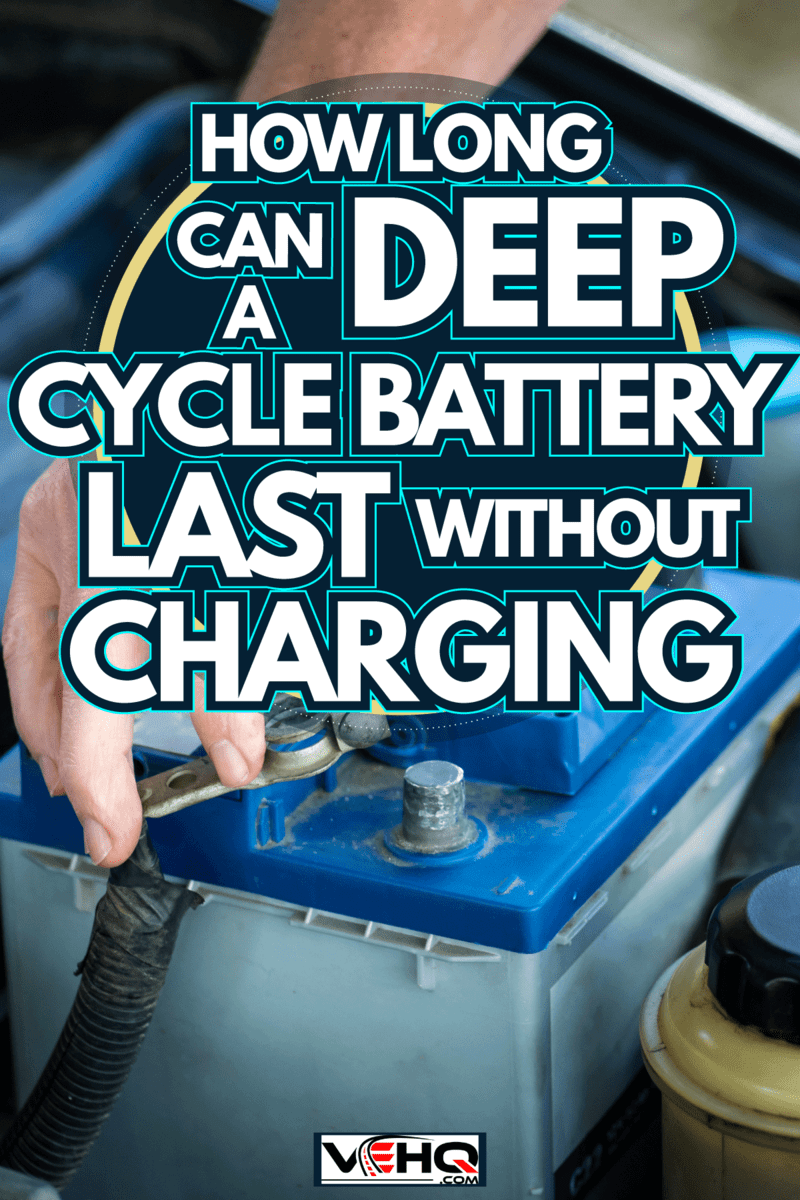
Charging A Deep Cycle Battery
Deep cycle batteries are lead batteries primarily. They provide sustainable power for long periods. Deep cycle batteries are very reliable and run until 80% discharged. Although, manufacturers recommend charging deep cycle batteries when they are discharged by 45%.
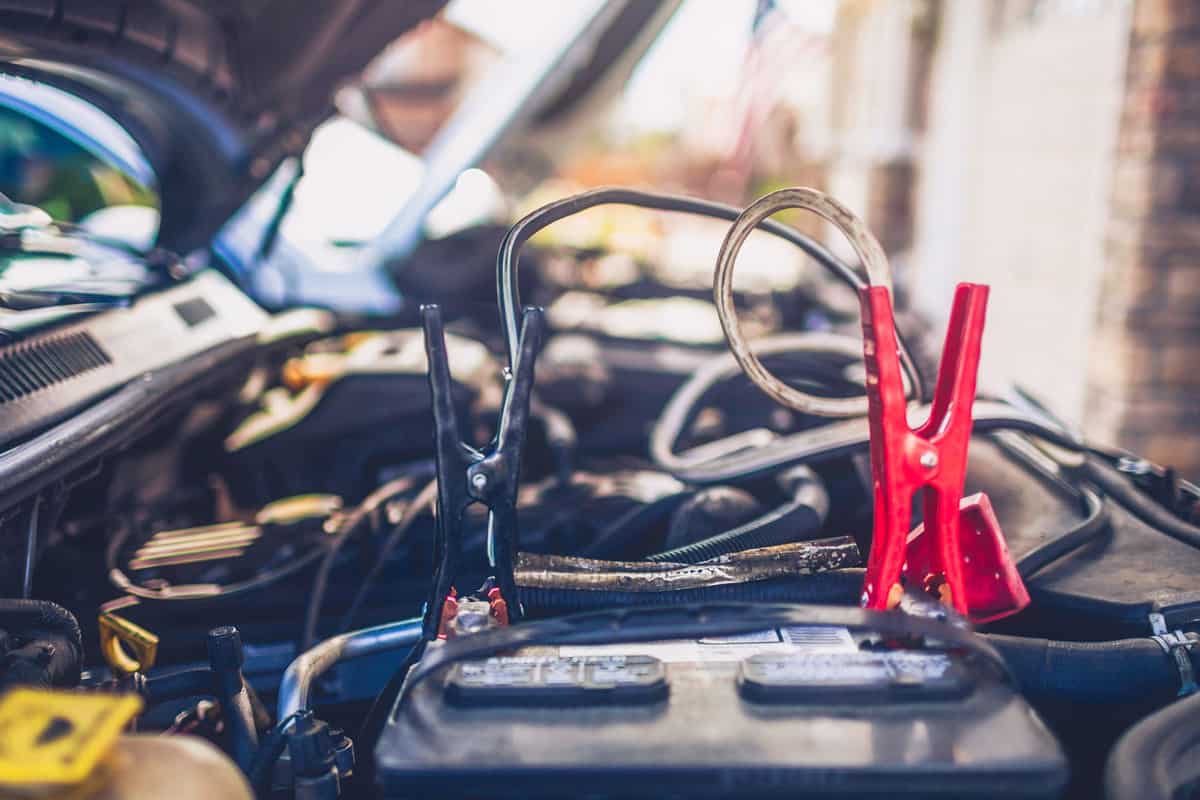
A battery is considered to be discharging after 20 hours of use. It would be best if you start charging the deep cycle battery at this point. There are different battery sizes and uses. These factors affect how often you should recharge your deep cycle batteries.
Where Are Deep Cycle Batteries Used
Deep cycle batteries are used in lots of places. We have some deep-cycle batteries involved in most aspects of our lives.
You can find deep cycle batteries in:
- Recreational vehicles
- Marine applications such as boats
- Golf carts
- Off-grid renewable energy
- Machinery such as forklifts
Deep cycle batteries are excellent because they can go for long before you need to recharge them. Unlike car batteries, deep cycle batteries don't need to be recharged often.
How Can A Deep Cycle Battery Be Discharged
Ideally, your deep cycle should be discharged no lower than 45% to 50% before recharging. It can discharge to 80%, but this isn't advisable.
Check out this deep cycle rechargeable battery on Amazon
How Do You Maintain A Deep Cycle Battery When Not In Use
Manufacturers advise keeping a deep cycle battery fully charged when not in use. The recommended voltage is 12.5v and above. Set a charge schedule to ensure that the deep cycle battery maintains a full charge.
How Often Can You Charge A Deep Cycle Battery
For your deep cycle battery to have a longer life, you should ensure that it never discharges past 20% before you charge it. If left without receiving a charge for a long time, deep cycle batteries run the risk of sulfation.
Sulfation is when a battery is deprived of a charge, causing build-up. Excess sulfation can impede a deep cycle battery's performance by not allowing chemical conversion.
How Fast Can You Charge A Deep Cycle Battery
A battery discharged to 25% can be charged for two hours with a 15 amps charger. A 5 amps charger can charge the same battery for six hours.
Can You Trickle Charge A Deep Cycle Battery
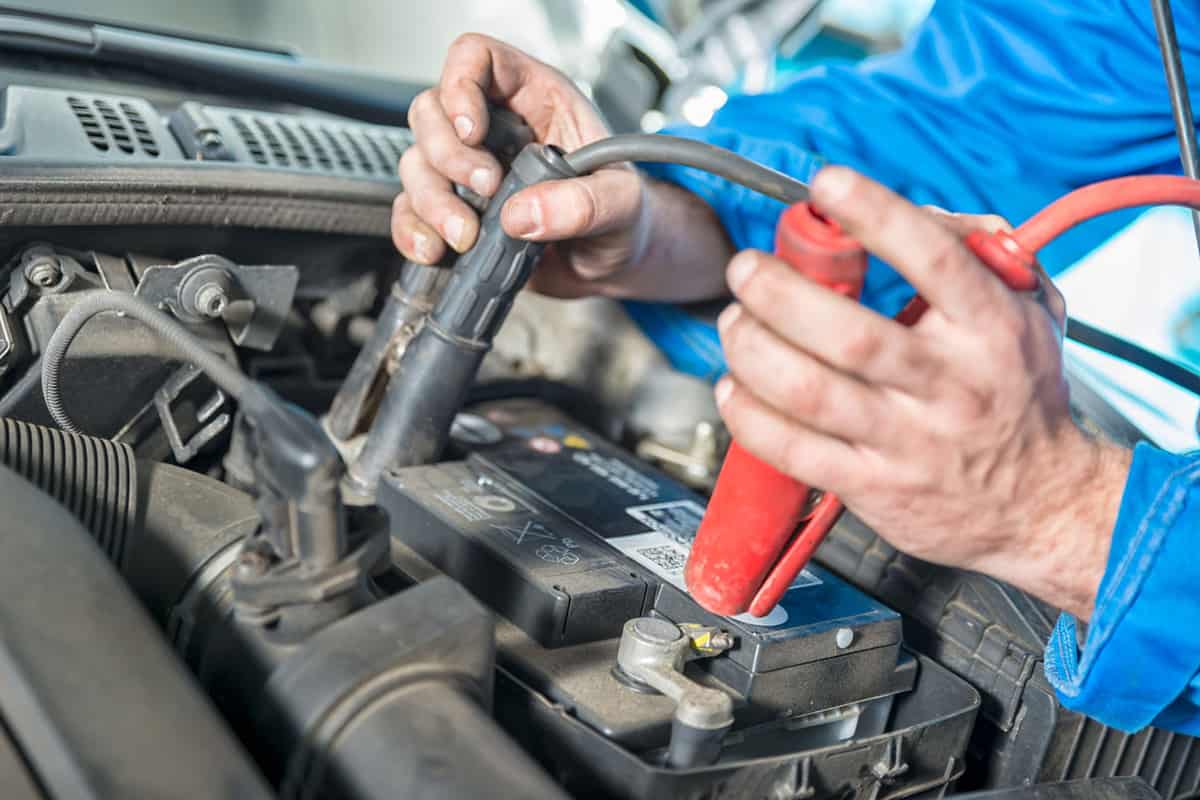
Yes, you can. Deep cycle batteries have a lower discharge rate, and sometimes trickle charging might be ineffective. Trickle charging a deep cycle battery can be redundant if it doesn't help maintain the level of charge in the battery.
Here's a trickle charger on Amazon
When a deep cycle battery is left unattended for too long, the water inside could dry up and cause irreparable damage. Therefore, you need to know the amps your battery charges at and the duration required.
Trickle Chargers vs Float Chargers
Trickle charging is when a battery is charged with the same amount of current as its self-discharge rate. Doing this keeps the battery full, and the battery will stay full when not in use.
Trickle chargers will charge your battery, but they don't have a feature to turn the current off once the battery is fully charged.
On the contrary, float charging is charging a battery continuously. Float chargers are equipped with a feature that turns the charging off when the deep cycle battery is completely charged. It will turn on automatically when the battery needs charging.
Here's a video demonstrating how the two work.
Note: Don't overcharge your deep cycle batteries to avoid the water in the battery drying out completely!
How Often Do Deep Cycle Batteries Need Water
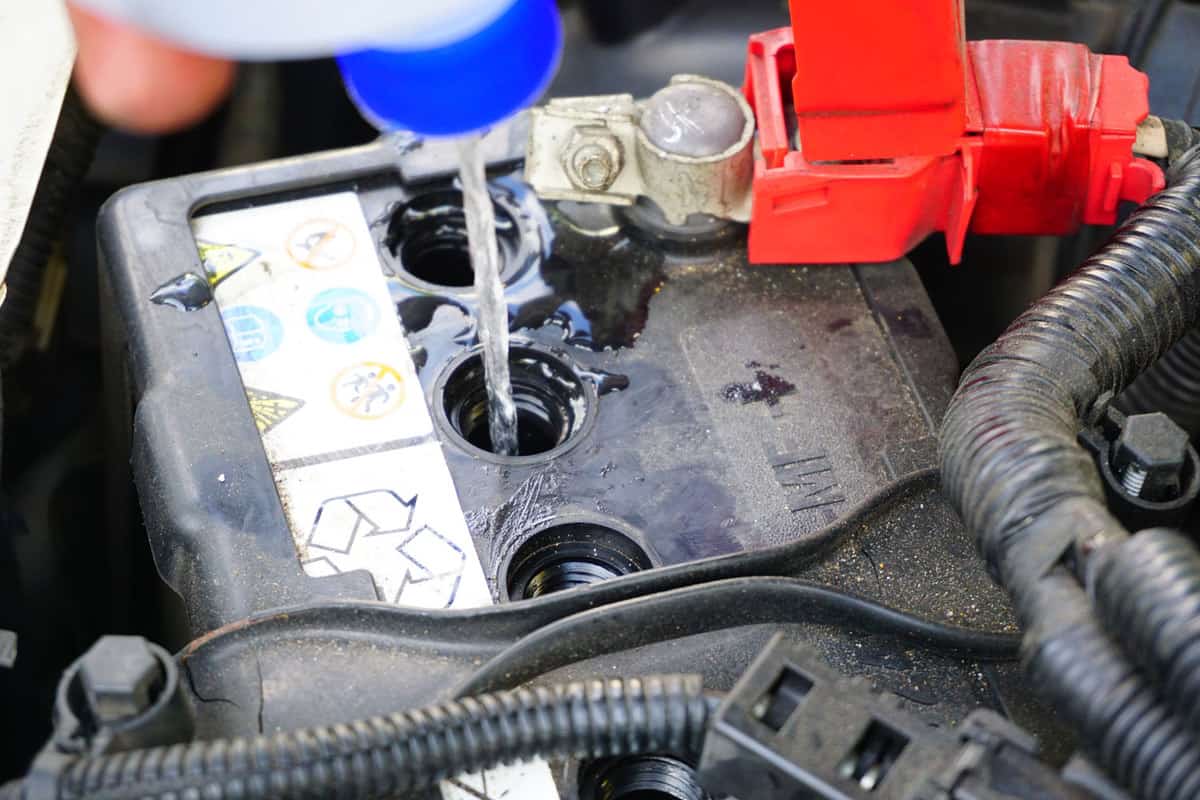
Experts advise checking the water level in your deep cycle battery every 15 to 30 days. It's good to check the water level when your deep cycle battery is fully charged.
In most cases, watering depends on the locality, the battery settings, or the specific application of your battery. Experts advise keeping a logbook on how often your battery needs refilling.
Acid Or Water For Deep Cycle Batteries
Never add acid to deep cycle batteries! Water is what you should add to your battery. Remember not to overcharge the battery. The amount of water in your battery should be 1/8 below the button of the vent well for efficiency, but not more.
Is Distilled Water The Same As Battery Water
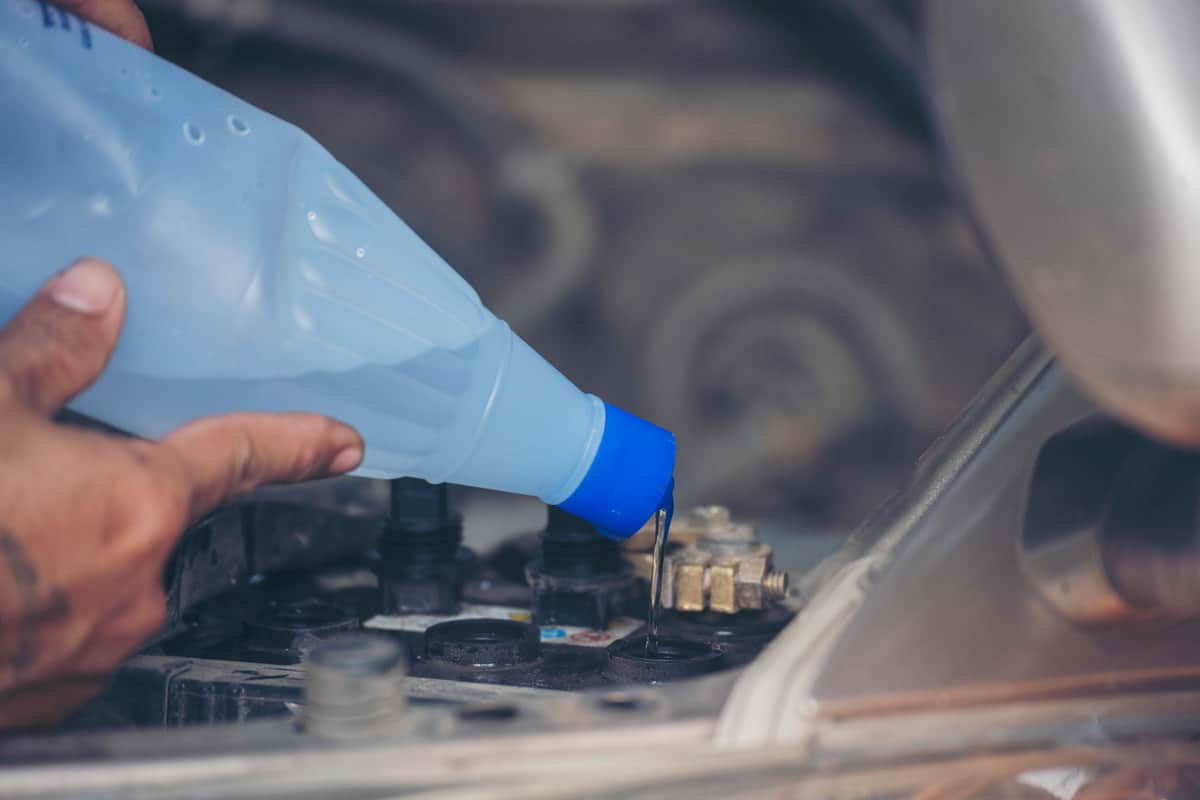
Deep cycle batteries have battery water which is distilled or deionized. Distilled water is the most commonly used water for batteries. However, you can use deionized water or water purified via reverse osmosis.
Water that has been boiled and recondensed to purify it, is known as distilled water. On the other hand, deionized water is water that has been treated to remove all dissolved minerals. Deionized water is preferable because most of the minerals have been removed.
Check out this water filler jug on Amazon
Another fantastic option is water purified by reverse osmosis, using permeable synthetic membranes. The membranes remove contaminants and sediments, and can eliminate chlorine, dirt, and salt.
Deep cycle batteries need water devoid of minerals because minerals cause the battery to self-discharge at a faster rate. Minerals also tamper with cell voltage which reduces the battery run times.
Use treated water to eliminate corrosion in your deep cycle batteries. Don't use ordinary tap water for your deep cycle batteries because it contains impurities that can slow the performance of your battery.
What Happens When A Battery Runs Out Of Water
Water keeps everything cool when not heated, which is also true for deep cycle batteries. The lead plates will be exposed when a deep cycle runs out of water, which exposes them to oxygen and hydrogen gas in the battery.
If this happens, the battery terminals will start emitting more heat, which is an exothermic reaction. The excess heat will continue to dry up the water in the battery until nothing is left.
What Does Equalizing A Deep Cycle Battery Do
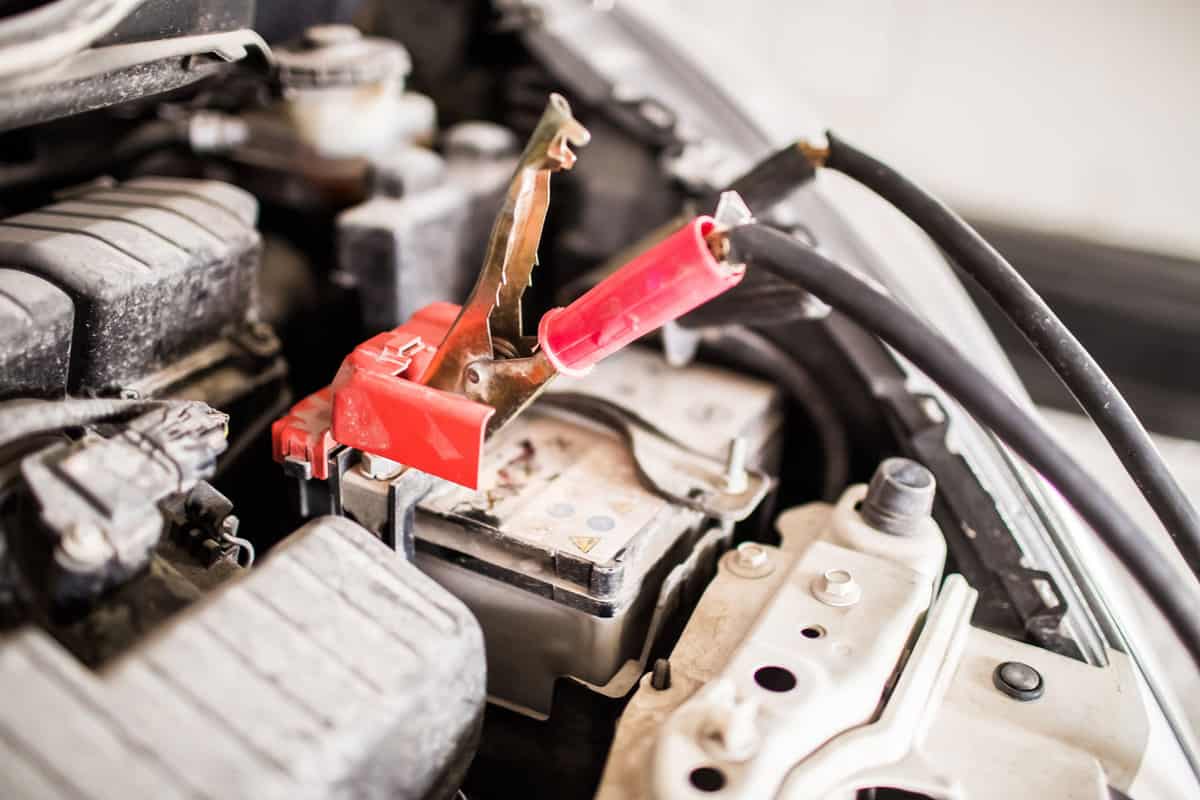
Avoid stratification by equalizing an overcharged deep cycle battery. Stratification is when acid settles at the bottom of the battery, which may occur during charging.
To reverse the build-up of acid and avoid sulfation, you need to equalize the deep cycle battery.
Equalize a deep cycle battery by overcharging it when it's fully charged. You shouldn't leave your deep cycle battery unattended when equalizing it.
Equalizing is done at a higher voltage to remove sulfate build-up, and it also balances out the voltage of each cell.
How Do You Charge A Flooded Deep Cycle Battery
You have to keep a watchful eye when charging deep cycle batteries. If you find water on the battery, this may indicate over-charging or over-watering.
Manufacturers' maintenance tips insist that a battery is partially or fully charged before adding water. Add enough water to cover the plates a bit if they are exposed. After doing this, you can start charging the deep cycle battery.
Final Remarks
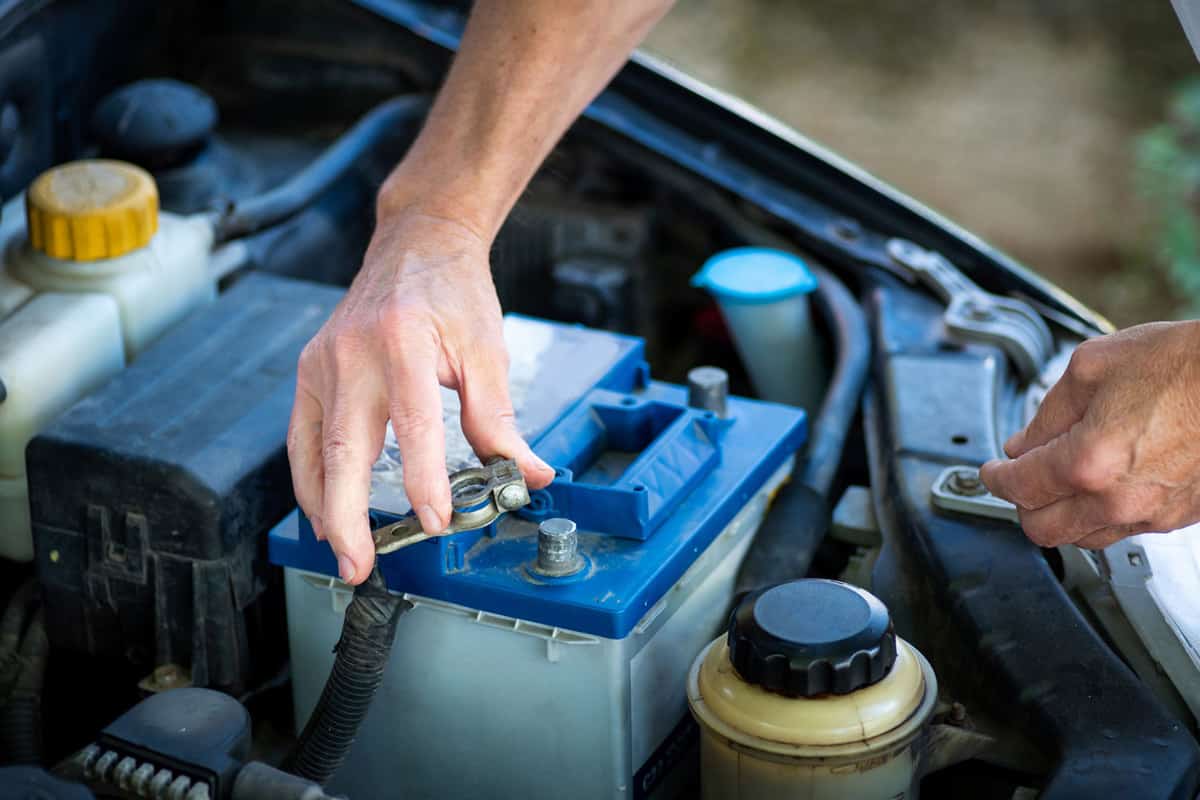
Deep cycle batteries can last a while without needing a charge when not in use. Ensure that you fully charge and use the trickle method for a completely discharged battery.
When your deep cycle battery is in constant use, use a float charger to maintain the charge after 20 hours. Avoid letting your battery discharge fall below 80% before connecting to a charger.
If you properly charge and correct water levels, it will help you get the most out of your battery. Also, doing this gives your deep cycle battery a longer life span.
If you enjoyed reading this post, here are some more to check out:



